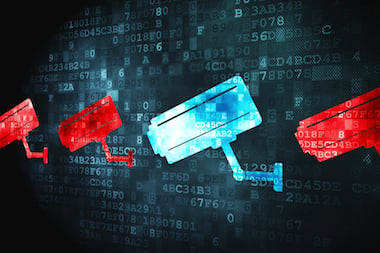Five telltale signs you've got a rogue employee

“Flash crash” trader Navinder Singh Sarao made millions for himself and knocked $500bn off the US markets. How can you tell you’ve got a rogue employee in your midst?
Jermaine Haughton
Accused of making £26.7m illegally by using a computer to manipulate prices on the stock market, onlookers would be forgiven for confusing the man nicknamed the “Hound of Hounslow” with a Hollywood movie character. However, the story of the 36-year-old, who allegedly helped wipe hundreds of billions of pounds off the price of the Dow Jones exchange, highlights to bosses the dangers of rogue staff.
Investment bank JPMorgan Chase & Co has experienced its fair share of controversies in the past, leading it to pay more than £24m in legal bills since the financial crisis. Now, the corporation has turned to a new multi-million pound system to detect rogue employees. The American firm says the software will filter through threats by assessing dozens of inputs made by workers, including violations of personal trading rules.
But how does an employer, without hundreds of millions of pounds at its disposal, identify the potential threats amongst new and existing staff?
Thorough reference checks
Checking references is an essential step required by employers to identify whether the candidate fits the job role and the company culture. Although the process often takes a lot of persistence and patience, it provides the first opportunity to get the opinion from a third party who has already experienced how the applicant behaves in a working environment. In the 5-10 minute conversation with referees, employers may pick up on issues that may identify a potentially disruptive employee.
Be observant
Are colleagues frequently working late in the office? Have you noticed suspicious websites appearing on a staff member’s desktop screen? Of course, it could be totally innocent but such strange behaviour could also signal a potentially threatening employee. The best assets companies have to counter rogues are vigilant employees, and bosses should invest in education on what questionable behaviour to look out for. A safe and confidential facility must also be made available for staff to report their observations anonymously.
Stringent social media policy
Business leaders must adopt a strong code of conduct for its employees on social media to protect the company’s reputation and integrity. The exponential growth of social media over the past decade has not only opened up new business opportunities, but also the risks that come with it. Starting with the banning of private use of company computers, the guidelines should prohibit personal attacks on other employees and customers, and all staff should be made aware of the serious consequences. Ultimately, employees must recognise that they represent their employer at all times.
Hold regular one-to-ones
Managers should attempt to have regular face-to-face meetings with staff to check on their progress and get feedback on what workplace improvements they would like to see, and be attentive to any difficulties they may be experiencing. Rogue employees often attack their employer because they feel personally wronged or that the company is doing something wrong to the general public. By allowing employees to speak freely, there is a possibility a rogue member of staff will inform employers of things they are not aware of.
Online activity tracking
Employers have the option of tracking all online activity made by each worker, from employee database and e-mail usage to website browsing activity. Pricier software can assess employees' online behaviour from both a functional and psychological perspective. However, there have been some concerns as to how far an employer should be allowed to monitor their staff. In a recent report on the ethics of employee surveillance, researchers from the Journal of Applied Management and Entrepreneurship at Nova Southeastern University said: "Both employers and employees are concerned with the ethical implications of constant monitoring.”
Image courtesy of Maksim Kabakou - from Shutterstock

Press & Media Enquiries
For more information or to request interviews, contact CMI's Press Team on 020 7421 2705 or email press.office@managers.org.uk


